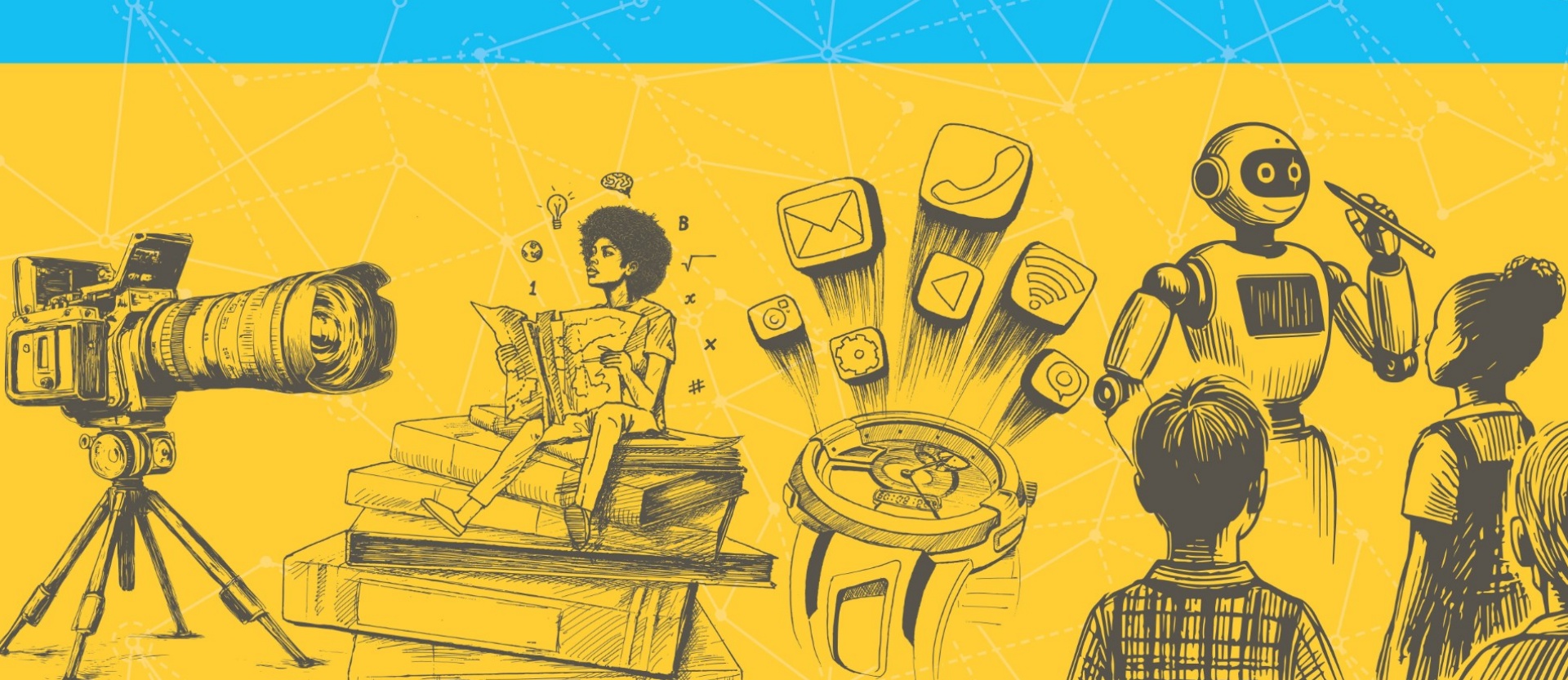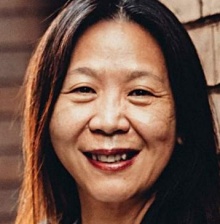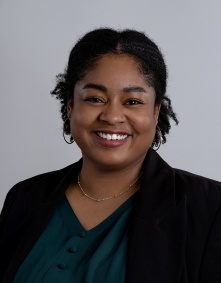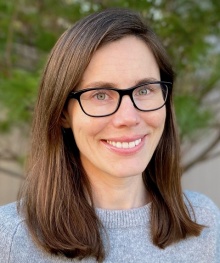
A formula for transformation:
New GSE labs drive the future of educational research
BY DANIELLE LEGARE AND NICOLE MEHLMAN-DAVIDOW
What sparks a revolution in education?
For X. Christine Wang, GSE professor of learning and instruction and senior associate dean for interdisciplinary research, it’s the courage to pursue bold, untested ideas that could redefine the future.
“It’s about exploring high-risk, future-facing solutions,” according to Wang.
That’s exactly what Wang and four other GSE researchers aimed to do in January 2024 when the school launched four new research labs. Each lab’s mission is centered on pushing the boundaries of equity-focused educational research, tackling real-world problems and delivering community-driven solutions. The labs mark the beginning of a new chapter of exploration at GSE and in the field of education.
Ian Mette, GSE associate professor of educational leadership and policy, was among the faculty members eager to contribute to this new chapter. Building on his earlier research, which led to several successful publications, Mette was determined to establish his Culturally Responsive Instructional Supervision Practices (CRISP) lab as a space to examine how theoretical ideas can evolve and be applied in real-world settings.
“We have these ideas and theories that we know are important and useful for creating more equitable outcomes for all students,” Mette explained. “But the real work begins when we ask, ‘How do we operationalize them? How do we help this theory evolve over time so that we understand how this works in practice?’ There’s nothing so useful as a good theory, but the theory needs to be able to transition and translate into practice.”
Bridging theory and practice: A new vision for educational research
Mette’s aspirations echo the broader vision within GSE’s leadership. Recognizing the need to bridge theory and practice, GSE Dean Suzanne Rosenblith spearheaded the Labs for Equity-Oriented Transformative Research Initiative to establish labs that would apply research findings in real-world settings.
“We're authentically engaging with communities, recognizing that the problems we think exist may not be the ones that truly matter to them.”
―Dean Rosenblith
Rosenblith invited faculty to submit proposals to establish labs that would tackle some of the most pressing issues in education through an equity lens. The initiative provided initial funding to support bold, transformative research ideas, ensuring that the labs had the resources to get started and make an immediate impact. The response was enthusiastic, with Mette and several other faculty members across departments eager to contribute to the transformative vision.
“A lot of people talk about community-engaged scholarship and research-practice partnerships, but too often, it’s just lip service,” Rosenblith explained. “What we’re doing here is different. We’re authentically engaging with communities, recognizing that the problems we think exist may not be the ones that truly matter to them. This authentic engagement is not just a part of our mission—it’s at the heart of it.”
From Rosenblith’s perspective, the four labs are about more than research—they’re about generating knowledge that makes a tangible difference in the lives of individuals and communities.
This impact extends to GSE’s students, who also are engaged in the innovative work. Yaxin (Grace) Xing, a PhD student involved in the PlayfulAI Learning and Design Lab, shared: “[The projects I’m working on] help me dive deeper into AI in education and enjoy the process. It’s not just a job for me; it’s more about my passion.”
As a result of the initiative, faculty and students alike are advancing the school’s mission and pioneering new methods of inquiry and solutions that have the potential to make a lasting impact.
“I want to support and signal to our faculty that their cutting-edge, forward-thinking work is valued,” said Rosenblith. “It’s important that we invest both materially and symbolically in these innovative efforts.”
Step into the labs that are already driving change through innovative research and community partnerships, paving the way for revolutionary educational practices and policies.
As AI continues to reshape various sectors, GSE’s PlayfulAI Learning and Design Lab is leading efforts to harness AI’s transformative potential in early childhood education (ECE). Led by X. Christine Wang, the lab is dedicated to developing responsible, effective and equitable AI learning tools for young children ages 5 to 8.
Wang envisions the lab as a hub for innovation in AI literacies and child-centered AI design.
“We have a three-pronged approach,” Wang explained. “First, we look at foundational research to understand children’s experiences with AI tools. The second part involves supporting AI literacy by developing tools that help children learn about and engage with AI. Finally, the third piece is where we engage children in the actual design of AI tools.
“It’s essential that children are actively involved in this process because they bring perspectives that we might not consider. For example, we’re exploring collaboration potential with Fisher-Price to create AI tools that actively involve kids in the design process.”

“We need to think about young learners as active innovators for the future.”
―X. Christine Wang
Wang emphasized the lab’s focus on ensuring that young learners are not just passive users, but active participants in shaping the technologies of the future.
“Ultimately, our goal is to study not just the parents and teachers, but to involve the kids themselves. We need to think about young learners as active innovators for the future. They could come up with ideas we never thought about, and that could be a springboard to innovative AI tools for their learning, play and social-emotional development.”
The PlayfulAI Learning and Design Lab’s team is comprised of experts in ECE, AI and computing education. It collaborates with community partners to generate AI-powered innovations that support child development and enhance early education.
Grace Xing, a doctoral student in the Department of Learning and Instruction, is one of those experts. For Xing and other students involved, this lab offers a unique opportunity to delve deeply into their research interests.
“We feel that AI is an emergent topic, particularly as AI technology becomes more prevalent in our daily lives,” she said. “It’s critical for educators to know how they should introduce AI in early childhood education to align with children’s developmental milestones. That’s why we wanted to start this lab,” she said.
“From my personal perspective, I found this project to be very fascinating and promising, overlapping a lot with my own interests.”
Reflecting on the lab’s mission, Wang explained that its work goes beyond simply observing children’s interactions with AI. Discussions within the lab have focused on how AI can be thoughtfully introduced to young learners while addressing broader societal and ethical implications. For Wang, the goal is to use those insights from children as a foundation for addressing significant and timely challenges that both the research community and society at large must confront.
The PlayfulAI Lab’s work extends beyond research and tool development. Wang and her team also are focused on guiding educators, caregivers and policymakers to support and prepare young children for an AI-driven future.
“Our work isn’t just about creating tools,” Wang said. “It’s about equipping those who interact with young children to navigate and thrive in a world increasingly shaped by AI.”
“This lab is an opportunity to push forward research that could have a significant impact on early childhood education,” she said.
In a world where systemic AntiBlackness remains entrenched within educational systems, the Black Liberation in Education, Schools and Society (BLESS) Co/Lab is building on the work of scholars, educators and Black communities invested in the well-being of Black people. Co-directed by Gwendolyn Baxley, assistant professor in GSE’s Department of Educational Leadership and Policy, the BLESS Co/Lab is dedicated to advancing Black liberation in education.
The BLESS Co/Lab encompasses an interdisciplinary team, also co-directed by Darnese Daniels, senior director of academic support and culturally responsive and sustaining education at the New York City Department of Education and proud founder of her educational consulting firm Lifting Light and Love LLC; Ja’Dell Davis, PhD, researcher and evaluator at the Wisconsin Center for Education Research, University of Wisconsin-Madison; Jacquie Forbes, PhD, assistant professor of educational studies and contributing faculty in Africana studies at Dickinson College; Marius A. Jackson, digital designer; and Gloria Rosario-Wallace, EdD, executive director for strategy and implementation at New York City Public Schools and adjunct professor for the National Aspiring Principal Fellowship through New Leaders and the Bank Street Graduate School of Education.
Leading together, they are committed to transforming and liberating spaces and systems that already exist, as well as creating spaces that support Black youth, their families, and the communities and schools that nurture them.
“The BLESS Co/Lab is a space where we’re leveraging the power of our research and storytelling to think about Black liberation for young folks within our schools,” explained Baxley.
“But it’s also about Black families, Black practitioners and Black youth workers who support the affirmation and well-being of Black youth… The collective is for folks who are interested in centering Black freedom, Black joy and Black healing.”
BLESS’s mission is to establish a collaborative network dedicated to identifying and dismantling the deeply ingrained system of institutional AntiBlackness. Guided by principles of community knowledge, consciousness-raising and coalition building, the team generates, shares and uses knowledge as a tool for action, aiming to reduce harm to Black students and advocate for liberatory practices and policies.

“The collective is for folks who are interested in centering Black freedom, Black joy and Black healing.”
—Gwendolyn Baxley
“I think of our work as an alternative to how research is traditionally conducted—challenging who gets prioritized, what philosophies are valued and how Black folks in the education system are engaged,” said Forbes.
A cornerstone of the lab’s current research project, “The Education of Black Youth Amid Covid and Beyond,” is its community dinners, which provide safe spaces for fostering dialogue and building coalitions. These gatherings have enriched the lab’s research and led to actionable strategies that address the needs of Black youth and their communities.
“It’s a way to center Black knowledge and thought, to uplift the voices of Black families, practitioners and youth, and to foster connections that drive action,” Baxley explained.
In addition to these dinners, the lab hosts retreats focused on healing and restoration for Black women community leaders, reinforcing its commitment to supporting those who carry the emotional weight of caring for others.
The lab also develops accessible forms of knowledge dissemination through publications and creative mediums like storyboards and podcasts, sharing its findings with the broader community in ways that resonate beyond academia. Some of BLESS Co/Lab’s work has been published in NYU Voices in Urban Education.
Above all else, the lab members are devoted to facilitating transformative change in the community. “Our work is non-hierarchical. We all are contributing meaningfully in different ways, whether that’s through the dinners, the writing or other visioning aspects of the work,” said Baxley.
“It is a mutually beneficial partnership, where, as a researcher in academia, I’m not extracting and then leaving from the community in which I am alongside. Instead, it’s asking, ‘How are we collectively working together to think about this important idea of Black liberation, and how are we fighting for Black liberation moving forward as a collective?’”
As schools continue to see their student populations become more diverse, it’s imperative that educators grow their knowledge of culturally relevant teaching practices and identify their own biases as they interact with students.

“This framework requires that teachers understand the lived experiences of students and that they care for them and use those as assets to leverage learning within the classroom.”
―Ian Mette
Ian Mette has made it his mission to research the best practices to help teachers
center socio-cultural identities and students’ lived experiences rather than their own.
“Culturally responsive instructional supervision takes an immense amount of work that requires educators to be critically conscious about their own privileged identities,” explained Mette. “This framework requires that teachers understand the lived experiences of students and that they care for them and use those as assets to leverage learning within the classroom.”
The Culturally Responsive Instructional Supervision Practices (CRISP) lab was born out of years of collaboration between Mette and his colleagues from across the country.
Mette has developed and expanded upon the framework of culturally responsive
instructional supervision alongside Dwayne Ray Cormier, PhD, and Yanira Oliveras, PhD. Cormier, a long-time educator, recently became the founder and CEO of Culturally Responsive Solutions, LLC. Oliveras is an associate professor in the School of Education at the University of Texas at Tyler.
Their collaboration has produced a book, “Making a Difference: Instructional
Leadership That Drives Self-Reflection and Values the Expertise of Teachers,” and a textbook, “Culturally Responsive Instructional Supervision Leadership for Equitable and Emancipatory Outcomes,” that articulate the best ways to bring theory into practice.
CRISP’s mission is to support and create innovative professional development and training for PK-12 educators to assess, implement and establish cultural competencies through AI collaboration and feedback. The goal is to inform leadership development and organizational decisions, while improving team dynamics to ensure the implementation of culturally responsive instruction.
Mette and his colleagues are conducting a study in which their subjects—educators from the Western New York community—wear devices to measure their physical reactions to stimuli.
“We want to know what happens to the human body physiologically when you engage in conversations about race, ethnicity, language, gender and identity orientation,” he said. “By measuring variables like skin conductance, heart rate variability and oxygen saturation when someone is engaging in cultural-based discussion, we want to understand what’s happening internally so that we can have better conversations that are more natural and comfortable for educators after they go through professional development based around our culturally responsive model.”
CRISP has found its lab participants through Mette’s connections with local school districts. Data collection will begin this fall and continue through next spring.
“We’d like to submit this data as part of our pitch for a large National Science Foundation grant,” said Mette. “Moving forward, we want to bring culturally responsive practices to educators, but we also want their feedback so we can continue to improve this model.”
Through its data collection, the CRISP lab will be studying how AI can support the development of equity-oriented educational leadership and inform communication patterns regarding classroom instruction that can revolutionize how practitioners, policymakers and researchers work together to generate real solutions for a more equitable and just education system.
“The hope is we’re able to measure and show that if you have less physiological stimulation when engaging in culturally responsive discussions and you can keep your body calm that you can engage in a more open reflection about improving your practices,” explained Mette. “We want educators to support students with different identities and lived experiences that they bring with them to the classroom.”
The importance of science, technology, engineering, art and math (STEAM) related
learning has been highlighted in school districts throughout the U.S., and GSE has been at the forefront of innovation in STEAM education.

“Some of the more traditional ways of capturing and learning don't always allow everybody's brilliance and knowledge and ways of thinking to be visible or to be seen or measured.”
—Naomi Thompson
The mission to make STEAM more inclusive is at the core of the Visualizing Brilliance for Equity in STEAM with Video Lab (ViBES with Video). ViBES is led by Naomi Thompson and Virginia Flood, assistant professors in GSE’s Department of Learning and Instruction. GSE faculty members X. Christine Wang; Noemi Waight, associate professor of learning and instruction; and Saguna Shankar, assistant professor of information science, also are founding members. Using video recording technologies, the lab looks to champion equity and social justice in STEAM education.
“The traditional ways of studying how people learn STEAM subjects have often involved pen and paper assessments and limited ways of capturing information about learning. Naomi and I are trying to bring people together and use innovative new forms of video recording technology to capture learning,” explained Flood.
“Our goal is to research innovative new ways to record learning in understudied settings. For example, joining science students at a riverbed for an ecology project and capturing collaboration and teamwork with drone video.”
The core mission of ViBES with Video is to rethink how learning is studied and understood. Flood and Thompson believe traditional methods often fall short by focusing on decontextualized, individualistic perspectives.
“Some of the more traditional ways of capturing and learning don’t always allow everybody’s brilliance and knowledge and ways of thinking to be visible or to be
seen or measured,” said Thompson. “It’s about building on folks’ assets and trying to understand what are the types of learning that we’ve been missing with previous methods, and how can we interpret visual cues into factual data and themes.”
In contrast, the ViBES Lab aims to amplify the voices of racially, linguistically and culturally diverse learners, capturing the dynamic and situated nature of their educational experiences.
“We’d like to invite different stakeholders and community members into our meetings and workshops, and we want to think more broadly about where STEM learning takes place,” said Thompson. “For example, in partnership with Gabrielle Graham from the Buffalo Museum of Science and Jay Barber from the English Department here at UB, we’re video recording a workshop that we’re leading that blends together creative writing and science.”
This lab will be one of the first to develop a culturally responsive and sustaining assetbased analytic framework for video research, created in partnership with the communities participating in the study. This collaborative approach enhances the research process and ensures that the insights gained are deeply rooted in real-world contexts.
“A big goal of ours is to gather different experts from a wide variety of departments and use their knowledge and experience in the space to build new methodological frameworks for being able to assess and understand learning in these authentic ways,” said Thompson.
“A great example we’re working on right now is collaborating with Saguna Shankar from the Department of Information Science. She’s helping us think about collecting video data, and she’s an expert in data privacy and how people care for data,” added Flood.
“This is something we had not originally thought about, but because we work with a diverse group of faculty in GSE, we were able to tap her expertise,” continued Thompson.
As for the future, the ViBES with Video Lab is committed to expanding its technological and methodological capabilities. By training new researchers in these innovative approaches and securing external funding, the lab will support a vibrant portfolio of projects that promise to drive lasting change in STEAM education.
“A big mission of ours is to involve doctoral and master’s graduate students and apprentice them in this work,” said Flood. “We have started to develop a PhD-level class in this type of research that will be hands-on learning to send new scholars into the field with this expertise as well.”

“Naomi and I are trying to bring people together and use innovative new forms of video recording technology to capture learning.”
—Virgina Flood
As the labs approach their first anniversary, the impact of their work is already beginning to take shape. For Wang, the progress made so far is just the beginning of what these innovative spaces can achieve.
“It’s what our mission is about—we want to make a difference in the lives of individuals and communities.”
―Suzanne Rosenblith
“I really feel that this group of labs represents our research innovation across all departments. With this heavy investment in exciting, futurefacing solutions, we are positioning ourselves well to move our research agenda forward and harness the potential of these innovation opportunities, including grants in areas like AI,” she said.
Wang’s sense of enthusiasm and anticipation is shared by Rosenblith, who is eager to see how these early efforts will translate into tangible outcomes. “I’m excited to hear about the results, and as we reach the one-year mark in January, we’ll see what has materialized,” she said.
“The researchers are all really trying to move a needle, and they’ve all identified important needles,” Rosenblith added.
“I would love to see all of them be really effective in this seed round, work through some of the issues, scale the work and make real differences. It’s what our mission is about—we want to make a difference in the lives of individuals and communities. The work has the potential to do that, and I only want them to be successful.”